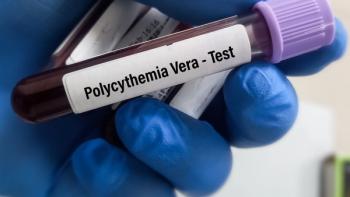
Breaking Down the Standard of Care for Patients With Polycythemia Vera

CURE spoke with Dr. Marina Kremyanskaya about the treatment landscape for patients with polycythemia vera.
CURE recently sat down for an interview with researcher Dr. Marina Kremyanskaya to discuss the current treatment landscape for patients with polycythemia vera (PV), a blood cancer characterized by excessive red blood cell production. This type of cancer is also classified as a myeloproliferative neoplasm (MPN), a type of blood cancer affecting the bone marrow.
Kremyanskaya is the lead investigator of the
Transcript
What is the current standard of care for patients who are newly diagnosed with PV?
There are a few different pathways that we could take. Typically, we look at a patient and determine which risk category they fit into. Somewhat artificially, patients are divided into two groups: low risk and high risk, and this is really based on their risk of thrombosis, meaning blood clots, in the future. It is mostly decided based on their age. At 60 years old, patients are considered high risk, and if they are younger than that, they are considered low risk. An additional risk factor is a previous history of blood clots, so if patients have none of that, they are considered low risk.
The typical treatment is therapeutic phlebotomy. Basically, we physically remove some of the blood from the patient in a process similar to what is done when people donate blood. The reason for this is that blood counts are very high, which puts patients at a higher risk for thrombosis. It has been shown that by decreasing the blood count, specifically the red blood cells, we can reduce their risk of thrombosis. Thrombosis, in this case, can be anything, for example, heart attacks, strokes, or blood clots in the legs, lungs, or other parts of the body. These can have very serious consequences.
Typically, we also have patients take a low-dose aspirin as a mild blood thinner to decrease the risk of blood clots. If patients are higher risk, then in addition to phlebotomies, we have a few other treatment choices. One of them is hydroxyurea, which works to reduce all blood counts. We have been using hydroxyurea for many decades for different blood cancers, and it is still commonly used in PV. Other options include interferon, which comes in a few different formulations and is given as injections, and Jakafi (ruxolitinib), a newer drug that is a JAK inhibitor. Jakafi is more of a biologic therapy that specifically targets the activated pathway seen in these disorders.
While there are a few different choices, phlebotomy remains the cornerstone of treatment. Although it sounds like there are many options, the reality is that there are actually not that many.
Transcript has been edited for clarity and conciseness.
For more news on cancer updates, research and education,





